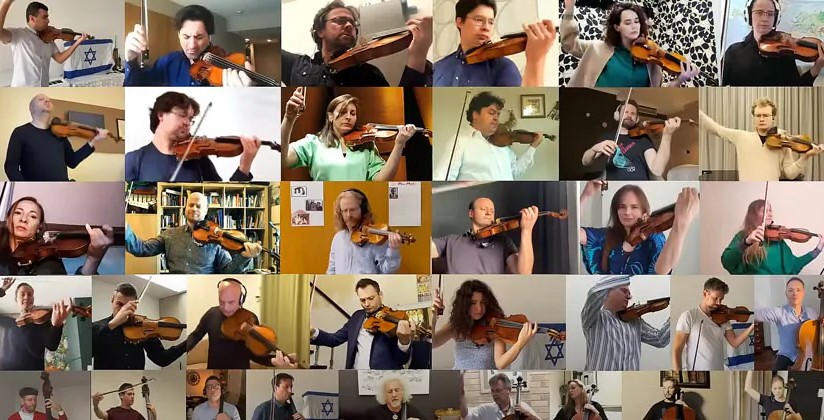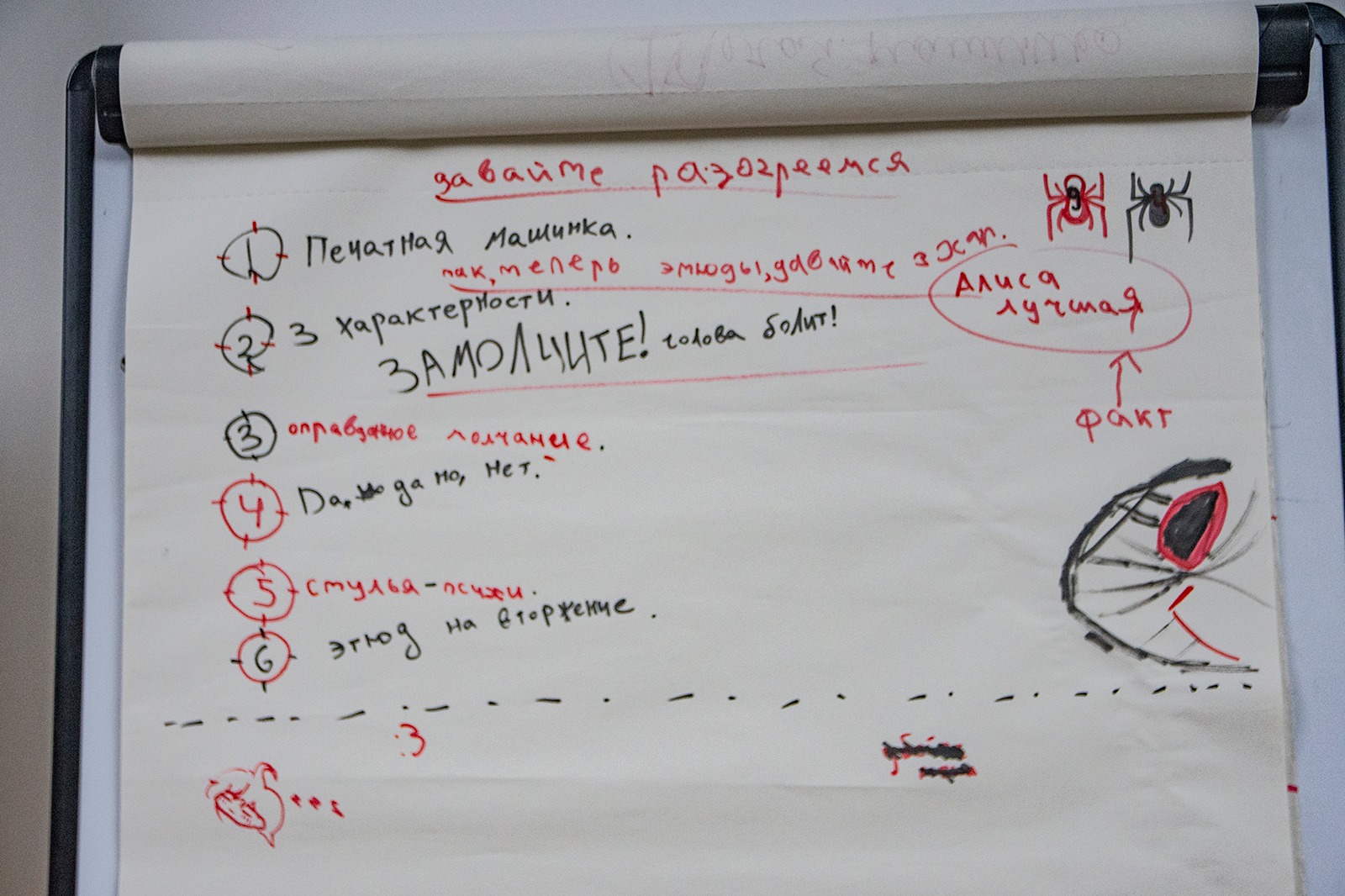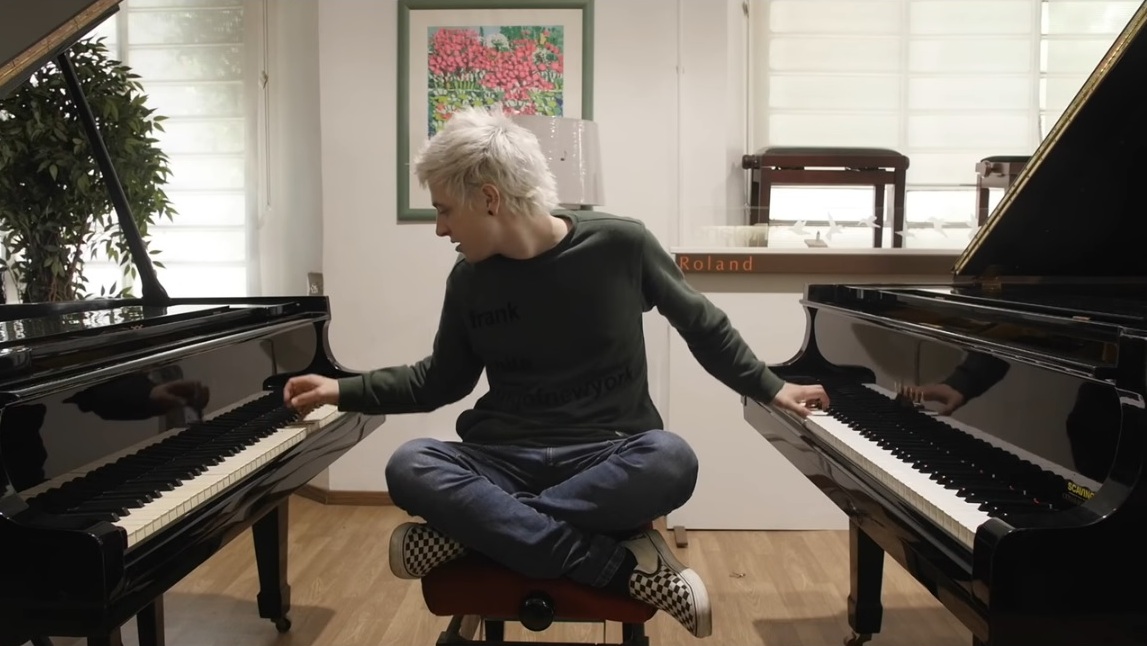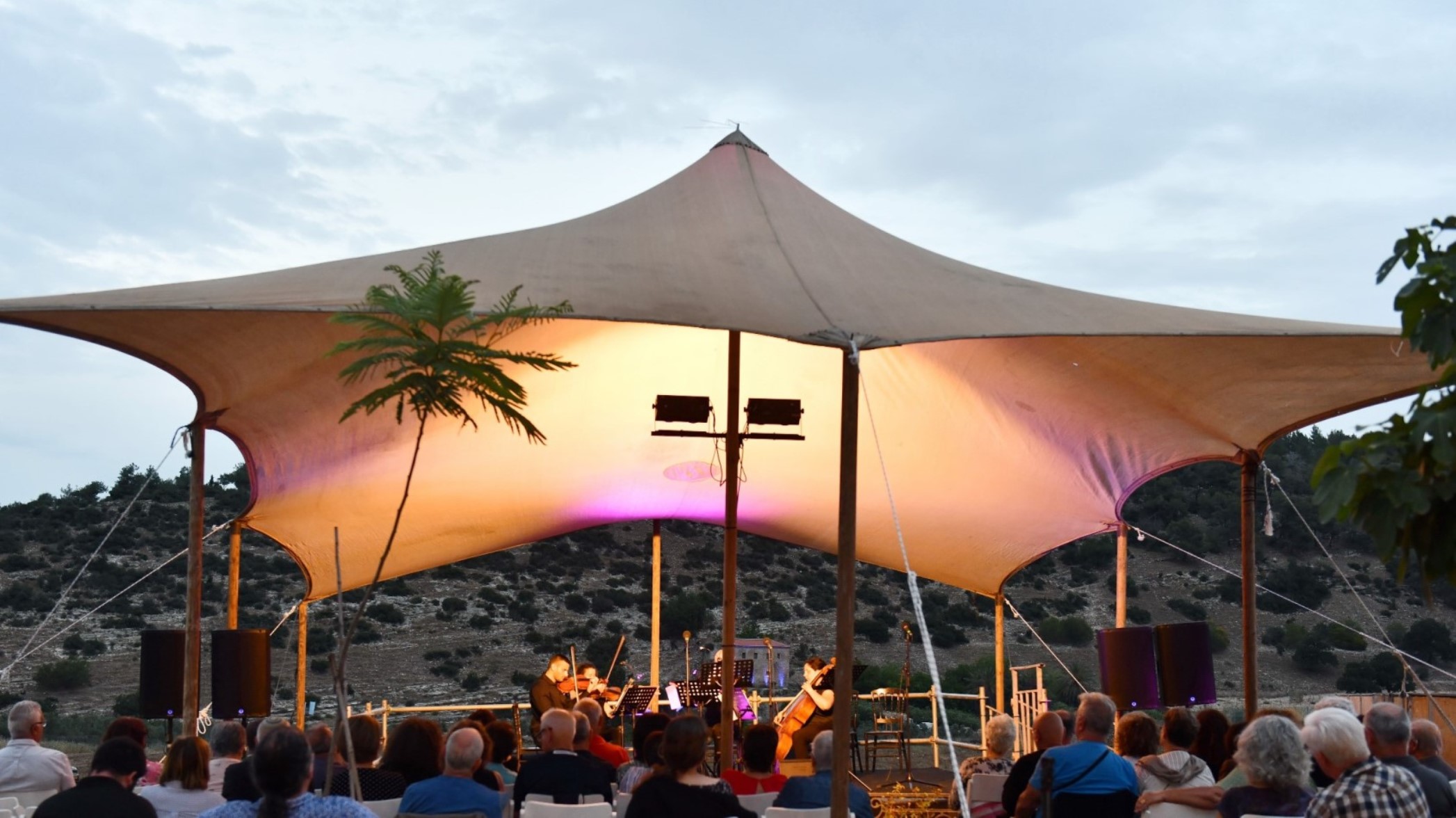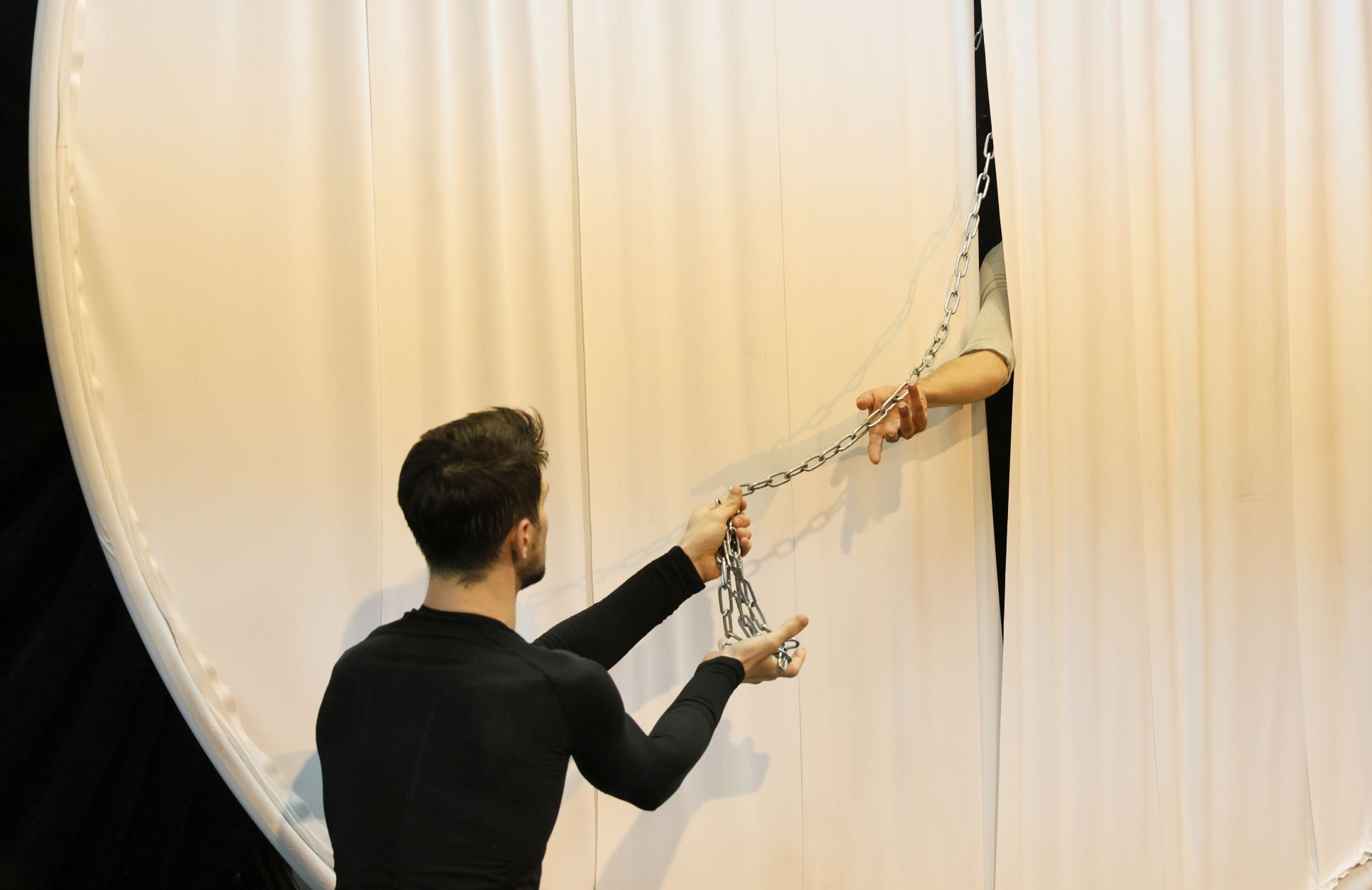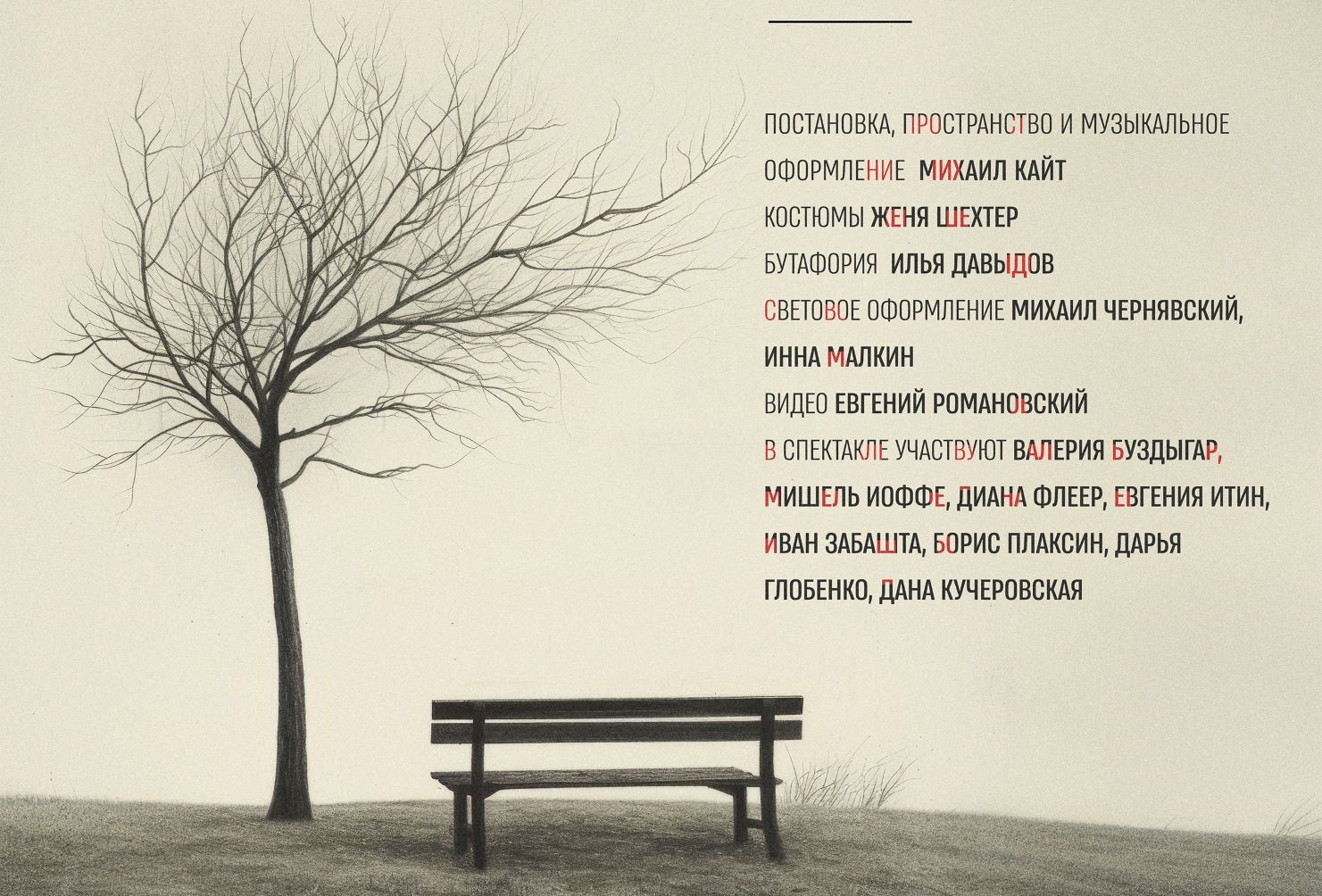«Паразиты» Пон Чжун Хо
Нечто столь же прекрасное, что и «Магазинные воришки», только с бо́льшим драйвом. Начинаешь совершенно иначе воспринимать философию бытия (не азиаты мы...) и улавливать запах бедности.
«Паразиты» – первый южнокорейский фильм, удостоенный «Золотой пальмовой ветви» Каннского фестиваля. Снял шедевр Пон Чжун Хо, в привычном для себя мультижанре, а именно в жанре «пончжунхо». Как всегда, цепляет.
«Синонимы» Надава Лапида
По словам режиссера, почти всё, что происходит в фильме с Йоавом, в том или ином виде случилось с ним самим, когда он после армии приехал в Париж. У Йоава (чей тезка, библейский Йоав был главнокомандующим царя Давида, взявшим Иерусалим) – посттравма и иллюзии, замешанные на мифе о герое Гекторе, защитнике Трои. Видно, таковым он себя и воображает, когда устраивается работать охранником в израильское посольство и когда учит французский в OFII. Но ведь научиться говорить на языке великих философов еще не значит расстаться с собственной идентичностью и стать французом. Сначала надо взять другую крепость – самого себя.
«Frantz» Франсуа Озона
В этой картине сходятся черное и белое (хотя невзначай, того и гляди, вдруг проглянет цветное исподнее), витальное и мортальное, французское и немецкое. Персонажи переходят с одного языка на другой и обратно, зрят природу в цвете от избытка чувств, мерещат невесть откуда воскресших юношей, играющих на скрипке, и вообще чувствуют себя неуютно на этом черно-белом свете. Французы ненавидят немцев, а немцы французов, ибо действие происходит аккурат после Первой мировой. Разрушенный войной комфортный мир сместил систему тоник и доминант, и Франсуа Озон поочередно запускает в наши (д)уши распеваемую народным хором «Марсельезу» и исполняемую оркестром Парижской оперы «Шехерезаду» Римского-Корсакова. На территории мучительного диссонанса, сдобренного не находящим разрешения тристан-аккордом, и обретаются герои фильма. Оттого распутать немецко-французскую головоломку зрителю удается далеко не сразу.
«Патерсон» Джима Джармуша
В этом фильме всё двоится: стихотворец Патерсон и городишко Патерсон, bus driver и Адам Драйвер, волоокая иранка Лаура и одноименная муза Петрарки, японец Ясудзиро Одзу и японец Масатоси Нагасэ, черно-белые интерьеры и черно-белые капкейки, близнецы и поэты. Да, здесь все немножко поэты, и в этом как раз нет ничего странного. Потому что Джармуш и сам поэт, и фильмы свои он складывает как стихи. Звуковые картины, настоянные на медитации, на многочисленных повторах, на вроде бы рутине, а в действительности – на нарочитой простоте мироздания. Ибо любой поэт, даже если он не поэт, может начать всё с чистого листа.
«Ужасных родителей» Жана Кокто
Необычный для нашего пейзажа режиссер Гади Ролл поставил в Беэр-Шевском театре спектакль о французах, которые говорят быстро, а живут смутно. Проблемы – вечные, старые, как мир: муж охладел к жене, давно и безвозвратно, а она не намерена делить сына с какой-то женщиной, и оттого кончает с собой. Жан Кокто, драматург, поэт, эстет, экспериментатор, был знаком с похожей ситуацией: мать его возлюбленного Жана Маре была столь же эгоистичной.
Сценограф Кинерет Киш нашла правильный и стильный образ спектакля – что-то среднее между офисом, складом, гостиницей, вокзалом; место нигде. Амир Криеф и Шири Голан, уникальный актерский дуэт, уже много раз создававший настроение причастности и глубины в разном материале, достойно отыгрывает смятенный трагифарс. Жан Кокто – в Беэр-Шеве. Новые сказки для взрослых
Хоть и пичкали нас в детстве недетскими и отнюдь не невинными сказками Шарля Перро и братьев Гримм, знать не знали и ведать не ведали мы, кто все это сотворил. А началось все со «Сказки сказок» - пентамерона неаполитанского поэта, писателя, солдата и госчиновника Джамбаттисты Базиле. Именно в этом сборнике впервые появились прототипы будущих хрестоматийных сказочных героев, и именно по этим сюжетам-самородкам снял свои «Страшные сказки» итальянский режиссер Маттео Гарроне. Правда, под сюжетной подкладкой ощутимо просматриваются Юнг с Грофом и Фрезером, зато цепляет. Из актеров, коих Гарроне удалось подбить на эту авантюру, отметим Сальму Хайек в роли бездетной королевы и Венсана Касселя в роли короля, влюбившегося в голос старушки-затворницы. Из страннейших типов, чьи портреты украсили бы любую галерею гротеска, - короля-самодура (Тоби Джонс), который вырастил блоху до размеров кабана под кроватью в собственной спальне. Отметим также невероятно красивые с пластической точки зрения кадры: оператором выступил поляк Питер Сушицки, явно черпавший вдохновение в иллюстрациях старинных сказок Эдмунда Дюлака и Гюстава Доре.
Kutiman Mix the City
Kutiman Mix the City – обалденный интерактивный проект, выросший из звуков города-без-перерыва. Основан он на понимании того, что у каждого города есть свой собственный звук. Израильский музыкант планетарного масштаба Офир Кутель, выступающий под псевдонимом Kutiman, король ютьюбовой толпы, предоставляет всем шанс создать собственный ремикс из звуков Тель-Авива – на вашей собственной клавиатуре. Смикшировать вибрации города-без-перерыва на интерактивной видеоплатформе можно простым нажатием пальца (главное, конечно, попасть в такт). Приступайте.
Видеоархив событий конкурса Рубинштейна
Все события XIV Международного конкурса пианистов имени Артура Рубинштейна - в нашем видеоархиве! Запись выступлений участников в реситалях, запись выступлений финалистов с камерными составами и с двумя оркестрами - здесь. Альбом песен Ханоха Левина
Люди на редкость талантливые и среди коллег по шоу-бизнесу явно выделяющиеся - Шломи Шабан и Каролина - объединились в тандем. И записали альбом песен на стихи Ханоха Левина « На побегушках у жизни». Любопытно, что язвительные левиновские тексты вдруг зазвучали нежно и трогательно. Грустинка с прищуром, впрочем, сохранилась.
«Год, прожитый по‑библейски» Эя Джея Джейкобса
...где автор на один год изменил свою жизнь: прожил его согласно всем законам Книги книг.
«Подозрительные пассажиры твоих ночных поездов» Ёко Тавада
Жизнь – это долгое путешествие в вагоне на нижней полке.
Скрюченному человеку трудно держать равновесие. Но это тебя уже не беспокоит. Нельзя сказать, что тебе не нравится застывать в какой-нибудь позе. Но то, что происходит потом… Вот Кузнец выковал твою позу. Теперь ты должна сохранять равновесие в этом неустойчивом положении, а он всматривается в тебя, словно посетитель музея в греческую скульптуру. Потом он начинает исправлять положение твоих ног. Это похоже на внезапный пинок. Он пристает со своими замечаниями, а твое тело уже привыкло к своему прежнему положению. Есть такие части тела, которые вскипают от возмущения, если к ним грубо прикоснуться. «Комедию д'искусства» Кристофера Мура
На сей раз муза-матерщинница Кристофера Мура подсела на импрессионистскую тему. В июле 1890 года Винсент Ван Гог отправился в кукурузное поле и выстрелил себе в сердце. Вот тебе и joie de vivre. А все потому, что незадолго до этого стал до жути бояться одного из оттенков синего. Дабы установить причины сказанного, пекарь-художник Люсьен Леззард и бонвиван Тулуз-Лотрек совершают одиссею по богемному миру Парижа на излете XIX столетия.
В романе «Sacré Bleu. Комедия д'искусства» привычное шутовство автора вкупе с псевдодокументальностью изящно растворяется в Священной Сини, подгоняемое собственным муровским напутствием: «Я знаю, что вы сейчас думаете: «Ну, спасибо тебе огромное, Крис, теперь ты всем испортил еще и живопись». «Пфитц» Эндрю Крами
Шотландец Эндрю Крами начертал на бумаге план столицы воображариума, величайшего града просвещения, лихо доказав, что написанное существует даже при отсутствии реального автора. Ибо «язык есть изощреннейшая из иллюзий, разговор - самая обманчивая форма поведения… а сами мы - измышления, мимолетная мысль в некоем мозгу, жест, вряд ли достойный толкования». Получилась сюрреалистическая притча-лабиринт о несуществующих городах - точнее, существующих лишь на бумаге; об их несуществующих жителях с несуществующими мыслями; о несуществующем безумном писателе с псевдобиографией и его существующих романах; о несуществующих графах, слугах и видимости общения; о великом князе, всё это придумавшем (его, естественно, тоже не существует). Рекомендуется любителям медитативного погружения в небыть.
«Тинтина и тайну литературы» Тома Маккарти
Что такое литературный вымысел и как функционирует сегодня искусство, окруженное прочной медийной сетью? Сей непростой предмет исследует эссе британского писателя-интеллектуала о неунывающем репортере с хохолком. Появился он, если помните, аж в 1929-м - стараниями бельгийского художника Эрже. Неповторимый флёр достоверности вокруг вымысла сделал цикл комиксов «Приключения Тинтина» культовым, а его герой получил прописку в новейшей истории. Так, значит, это литература? Вроде бы да, но ничего нельзя знать доподлинно.
«Неполную, но окончательную историю...» Стивена Фрая
«Неполная, но окончательная история классической музыки» записного британского комика - чтиво, побуждающее мгновенно испустить ноту: совершенную или несовершенную, голосом или на клавишах/струнах - не суть. А затем удариться в запой - книжный запой, вестимо, и испить эту чашу до дна. Перейти вместе с автором от нотного стана к женскому, познать, отчего «Мрачный Соломон сиротливо растит флоксы», а правая рука Рахманинова напоминает динозавра, и прочая. Всё это крайне занятно, так что... почему бы и нет?
Тайские роти
Истинно райское лакомство - тайские блинчики из слоеного теста с начинкой из банана. Обжаривается блинчик с обеих сторон до золотистости и помещается в теплые кокосовые сливки или в заварной крем (можно использовать крем из сгущенного молока). Подается с пылу, с жару, украшенный сверху ледяным кокосовым сорбе - да подается не абы где, а в сиамском ресторане «Тигровая лилия» (Tiger Lilly) в тель-авивской Сароне. Шомлойскую галушку
Легендарная шомлойская галушка (somlói galuska) - винтажный ромовый десерт, придуманный, по легенде, простым официантом. Отведать ее можно практически в любом ресторане Будапешта - если повезет. Вопреки обманчиво простому названию, сей кондитерский изыск являет собой нечто крайне сложносочиненное: бисквит темный, бисквит светлый, сливки взбитые, цедра лимонная, цедра апельсиновая, крем заварной (патисьер с ванилью, ммм), шоколад, ягоды, орехи, ром... Что ни слой - то скрытый смысл. Прощай, талия.
Бисквитную пасту Lotus с карамелью
Классическое бельгийское лакомство из невероятного печенья - эталона всех печений в мире. Деликатес со вкусом карамели нужно есть медленно, миниатюрной ложечкой - ибо паста так и тает во рту. Остановиться попросту невозможно. Невзирая на калории.
Шоколад с васаби
Изысканный тандем - горький шоколад и зеленая японская приправа - кому-то может показаться сочетанием несочетаемого. Однако распробовавшие это лакомство считают иначе. Вердикт: правильный десерт для тех, кто любит погорячее. А также для тех, кто недавно перечитывал книгу Джоанн Харрис и пересматривал фильм Жерара Кравчика.
Торт «Саркози»
Как и Париж, десерт имени французского экс-президента явно стоит мессы. Оттого и подают его в ресторане Messa на богемной тель-авивской улице ха-Арбаа. Горько-шоколадное безумие (шоколад, заметим, нескольких сортов - и все отменные) заставляет поверить в то, что Саркози вернется. Не иначе.
|
 |
Off to Space: Counternarrating the Cosmos
| 13.02.2020 |
Black Quantum Futurism, Masha Godovannaya, Yevgeniy Fiks, Andréa Stanislav, Axel Straschnoy, Driant Zeneli
Curator: Maria Veits
Today’s environmental, political and economic crisis alongside the anxiousness about tomorrow and cross-planetary colonial ambitions instigate a new spiral turn of the space race that now includes both states and private corporations who fight for limited lunar resources. Even though the contemporary world is far from being dual, in the context of failing democracy, growing nationalism, and overall political throwback revisiting the politics of the Cold War era could be helpful for reassessing the current moment of confusion and political apathy while also contemplating potentialities of the future(s) in view of the developing totalitarian agenda in former socialist states and beyond.
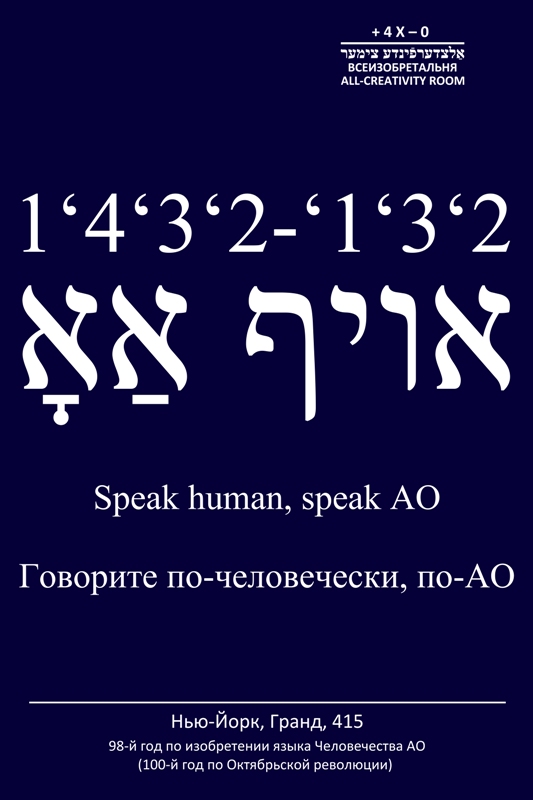
Yevgeniy Fiks, AO language 3, giclée print, 100x150”, 2019
“Off to Space: Countenarrating the Cosmos” brings together works by six international artists and collectives who integrate underrepresented narratives and practices of post-memory into contemporary political contexts and processes. The platform for such excavation of difficult knowledge, repressed memories and forgotten scenarios of the already cancelled future is space exploration strategies that started in the 20th century as attempts to widen geopolitical influence, accumulate power and make utopias possible.
Presenting multiple narratives about the space exploration and displaying how affected it has always been by ruling ideologies, political visions and dominant social lenses, the exhibition becomes a platform for discovering a variety of counter-futurisms and temporalities and offers artistic ways of representing displaced stories and reclaiming the past and the future. Addressing events set in the past, the artists reflect upon current issues including growing antisemitism and new strategies of exile, feminist movements, economic segregation, and growing inequality. Showing space exploration from positions of ethnic minorities, women, animals, small communities, and dependent economies, the works at the exhibition disclose the cost of technological development and progress that largely contributed to contemporary environmental and political cataclysm but was never a part of the official spacial discourse cherished by the governments as the symbol of national power. Including counter-histories and counter-futurisms in the realm of shared public knowledge, the artists bring back displaced identities and articulate cases of voice dispossession thus bringing historical justice to silenced communities and individuals.

Yevgeniy Fiks, AO language 2, giclée print, 100x150”, 2019
The Soviet history of space exploration always served as a powerful tool for propaganda and has been actively used by the state to form a national identity. The formal historical narrative about space, as well as the policy of choosing heroes who would embody the space achievements of the USSR, were constructed in accordance with current ideological discourse. Yiddish Cosmos by Yevgeniy Fiks offers an alternative, subaltern look at the Soviet space conquest from the perspective of Soviet Jewish experience. The project creates a futuristic narrative where the ideas of technological development merge with the principles of Yiddish culture and reinterpretation of the figure of a Soviet refusenik (a term marking Soviet Jews who were denied the right to emigrate from the USSR) and the struggle for liberty of movement in the years of state antisemitism. Yiddish Cosmos draws from the stories of three people. Panarchist Volf Gordin was a theorist of the space universal language AO, a utopian linguistic project that arose on the wave of post-revolutionary enthusiasm of the 1920s, but never received development. Ari Sternfeld, who came to the USSR from Poland and was one of the founding fathers of the Soviet cosmonautics and coined the term, was prohibited to work officially as a space scientist in 1937 and never gained reputation in the USSR. The cosmonaut Boris Volynov was the first Halachic Jew in space in 1969, who could have been the first man in space had it not been for his Jewish origin. Combining space-related facts with elements of Yiddish culture and tradition, the project speculates the idea that the Soviet Cosmos became the epitome of the Soviet Homeland for Soviet Jews, and therefore, defines the Soviet Jewish narrative as one of longing for scientific progress as a “homeland” that embraces them. In the Soviet and Russian public consciousness and ideological paradigm, national space exploration has always relied on the names of Russian researchers and spacemen, while Jews have hardly been mentioned. Based on micro-historical narratives and personal stories, Yiddish Cosmos helps forming a more comprehensive and detailed picture of the Soviet (Jewish) past, decolonizing history and narrating the Soviet Space Program from an ‘unwanted ethnicity’ perspective. The chronological timeline juxtaposing the stages of development of the Soviet space program with the phases of the state antisemitism and people’s struggle against it can be seen as a tool to fight collective amnesia that takes different forms depending on the context where it is shown - in Russia, the USA, or Israel.
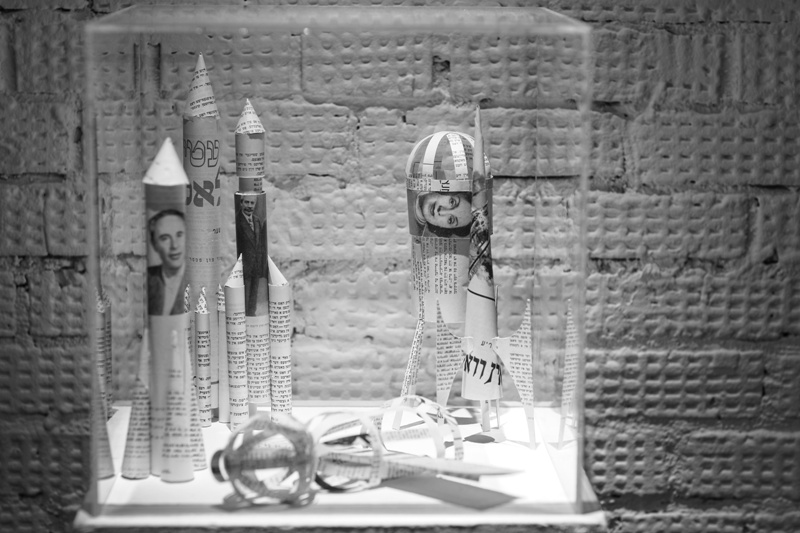
Yevgeniy Fiks, Yiddish Cosmos. Paper sculptures made of the pages of the journal “Sovetish Heimland”. CCI Fabrica, Moscow, 2019. Photo: Oded Comay
Similarly, space was much less accessible for people of color in the US as it was closed for representatives of certain nationalities in the USSR, and NASA was harshly criticized by Black communities for absence of diversity in their astronauts and the controversial resignation of Ed Dwight, a Black astronaut a few years before the moon landing. Envisioning tools needed to create liberatory Afro-future(s) is at the core of the project Black Space Agency of the artist duo from Philadelphia Black Quantum Futurism. The project, initially created with and for communities in Philadelphia, addressed issues of affordable and fair housing, displacement/space/land grabs, redlining, eminent domain, and gentrification through the lens of Afrofuturism, oral histories/futures, and Black spatial-temporal autonomy. As a point of departure Black Quantum Futurism use the resistance of the Black Community in North Philly during the 1960’s against the space race. Moon landing and other expensive NASA programs were condemned by the Black communities because of ignoring the lack of affordable housing and growing poverty. Black Space Agency focuses on the story of Rev. Leon H. Sullivan, a civil rights leader and minister at Philadelphia’s Zion Baptist Church, who established Progress Aerospace Enterprises (PAE), one of the first Black-owned aerospace companies. PAE had strong connections to the Civil Rights and Black liberation movements, affordable housing, economic stability, passage of the Fair Housing Act, and the space race. In response to the critique on the part of the Black liberation movement, NASA became briefly involved in the design and applicability of spaceship materials in “urban” and government-subsidized housing. Much of this Black resistance and involvement has been erased from the popular memory. Black Space Agency aims to re-stimulate memory of all of these interconnected events and underexplored history, make the threads visible and show how they reach into and overlay the present and future(s) of affordable housing, Black liberation, and the fight for space and time in Black communities.
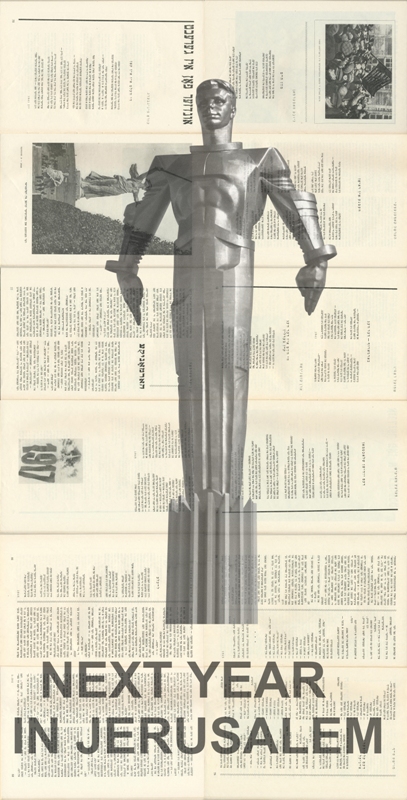
Yevgeniy Fiks, Next Year in Jerusalem, giclée print, 52X102, 2019
The gender lens for discussing space exploration appears in new work Zero Gravity — Nostalgia for Earth by Andréa Stanislav. For years, the dominating perspective on space exploration has been based on the achievements of men, while the legacy of female astronauts and researchers and the impact it has had on the environmental, political, and social climate in historical perspective and contemporary context has been diminished and mostly known through the first woman in space Valentina Tereshkova. While mining the controversial history of female contributions throughout space race in the 20th century Stanislav undertook a research on space exploration at the Moscow Museum of Cosmonautics, where she explored the zero gravity designs of the Soyuz, MIR spacecraft, and International Space Station by the Soviet Space Program architect Galina Balashova. The video location setting is a space capsule orbiting Mars, partially shot in actual Soyuz capsules designed in the 1970s by Balashova, whose name became widely known only in 2000 after the first exhibition of her works in Moscow. Andréa’s gravitating camera seamlessly floats from one context to another accompanied by the famous Soviet song “Nadezhda” (in Russian it is a female name, which also means ‘hope’) that is known to be a sonic talisman of the Soviet cosmonauts. The ideas of the Russian Cosmism about the advancement of humankind towards natural space colonization, cosmic rebirth, and the preservation of Earth's nature in space are woven through Stanislav's collaged images and actions, serving as a mystic and utopic binder.
Masha Godovannaya touches upon the first explorers of space and the lives that were sacrificed in the early stages of space research from the perspective of animal rights. Laika was the first dog which was successfully sent to the Earth’s orbit by Russians. One of the many Soviet space-dogs, the first cosmonauts, who paid with their lives for men’s conquering space. This film Laika. The Last Flight is a letter from the dead dog. Her haunted spirit re-tells the story of her heroic deeds and martyrdom. The letter is not a call for a revenge or restitution, it’s rather a document of a life, one of many lives that have been considered “disposable” and “killable” by the well-known human strategies of conquest and domination. The work can also be viewed as a reference to the systematic Stalinist repressions against scientists and researchers who were put to the numerous Soviet labor camps, from where many of them continued their research and work while imprisoned and tortured. Sergey Korolev, lead Soviet rocket engineer and spacecraft designer who was involved in the launching Laika and the first human being, Yuri Gagarin, into space, also underwent the GULAG from 1930 to 1944 and was fully rehabilitated only in 1957.
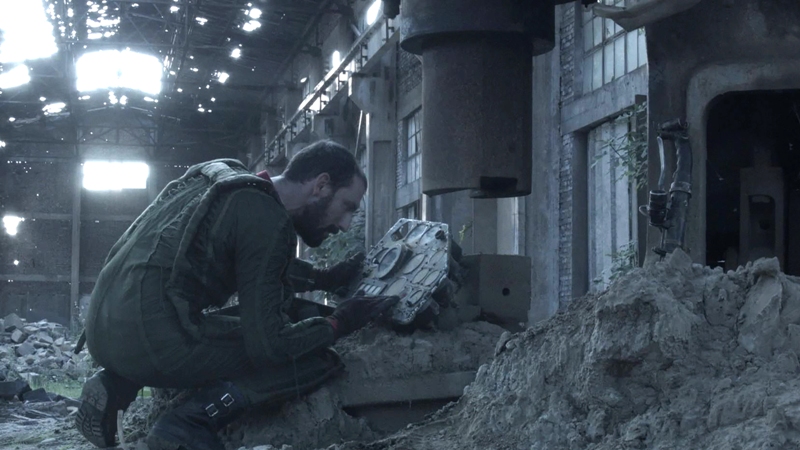
Driant Zeneli, It Would Not Be Possible to Leave the Planet Earth Unless Gravity Existed, 2017, HD video, 13’41’’, video still. Image courtesy: the artist and Prometeogallery Milan-Lucca
Driant Zeneli also addresses the aftermath of the toxic communist legacy, but in Albania, and speculates about the future after an environmental catastrophe that it had provoked in his video work It would not be possible to leave the planet Earth unless gravity existed. In the center of the work is the Metalurgjiku plant built by the Chinese in the 1960-1970s, when the Communist China was compensating Albania for the loss of Soviet economic support after the Soviet-Albanian split. Metalurgjiku processed the heavy metals that supplied the whole Albanian industry, and occupied the territory of around 250 thousand hectares, where 12 thousand people used to work during the 70’s. The city of Elbasan, where the plant was located, had become a heavily polluted city. Diseases, cancer, genetic mutations, and intoxicated air have often made the headlines in Albanian media since the early 90s. In Zeneli’s video Metalurgjiku looks like an industrial archaeological site or a futuristic Sci-Fi city after an apocalypse, where the protagonist, Mario, is looking for a possibility to escape to the outer space from the industrial and political ruins of the site that used to represent a utopian communist Albanian society and a megalomanic economic dream.
Aspirations and dreams about space are central to the short film by Axel Strasсhnoy, who, narrating the story of the Finnish Astronautical Society, explores the Finnish futurism and the futuristic ambitions of the post-war Finland. Geographically and politically, Finland has always been feeling the pressure both from the East and the West and this tension still remains especially after 2014 and the wave of US and EU sanctions on Russia. The Society started to develop the Finnish Space Program in 1959, a year after NASA, it was the time when each country looked for ways to be part of the exploration of space and all rocketry research was looked at with interest by the military. However, after the Cold War was over, the work of the society started to shrink and its ambition to participate in the global space exploration program eventually reduced to a male hobby: some type of a club for men for building and launching model rockets every now and then. Having become a member of the society, Strasсhnoy observes the contemporary routine and rituals of rocket models launching in which he also occasionally participates. The film documenting these rituals and the life of the Finnish Astronautical Society today marks its 60s anniversary since it was founded by enthusiastic schoolboys who, inspired by the space race, set out to build the country’s first rocket.
The Israeli Center for Digital Art, Holon
February 22 – May 23, 2020 |





Field 'text' doesn't have a default value Read more:
|
 |
Элишева Несис.
«Стервозное танго»

|









